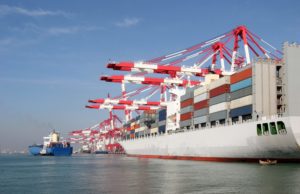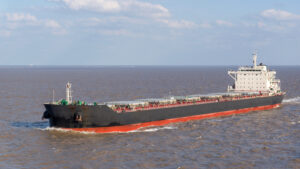The global banking industry faced many challenges in 2022. The Ukrainian war and international sanctions led to trade dislocation, says Petrofin in its latest global bank ship finance research.
“For banks in 2022, finding loan transactions that met their credit criteria became increasingly difficult,” the report noted, pointing out that loan terms for eco vessels are better than for non eco vessels.
Lending for newbuildings did not increase in line with the orderbook, as the newbuilding total for 2021 was at 180m tons, at the end of 2022 it was 228m tons and 238m tons as of 30/06/2023 (Clarkson’s).
In its annual survey Petrofin reveals that leasing has made further progress, especially for newbuilding fleets and public companies, which required large sums and flexible terms, something that leasing companies were able to provide.
Most shipowners were reluctant to commit to conventional technology newbuildings and preferred “to enjoy their good cash flow and high liquidity”, as it is said in the research, until a new proven eco technology would arise. Also major charterers have not shown preference for period charters unless able to obtain such at a discount.
“It is hardly surprising that under the above conditions global bank lending remained at similar levers amounting to US$289.39bn,” according to Petrofin Research.
The shift away from Europe, towards the Far East continued, with European banks’ share falling to 49.5%, whilst Far East lending increased to 44% of global ship finance totals.
The Petrofin Index remained at 63, which implies that bank lending continues to be flat.
Lending by Greek banks has risen against the European downward trend.
As the global fleet continued to grow, the financing gap was covered by leasing, alternative sources of finance and own funds, the report noted.
Petrofin’s 2023 predictions for global ship finance are that leasing, funds and SLB transactions have now become a well-accepted alternative to bank loans, and it is expected this segment of the global ship finance market to grow.
Ted Petropoulos, head of the Petrofin research, says it is difficult to anticipate growth in global ship finance in 2023.
“Whereas we still anticipate a continuous shift away from Western lending towards Far Eastern lending, we expect global ship finance totals to remain stable. China’s commitment to growth is offering some hope of an early recovery in seaborne trade and dry bulk in particular. The US and Europe are still facing slow / no growth but this varies from country to country.”
Of the top 40 global banks, 19 were European, 18 Far Eastern, including Australia and 3 North American. Significantly and indicative of the growing presence of Japanese lending of the total 40 Top Banks, 11 are Japanese.
Asian and Australian banks (APAC) show significant growth, especially their market share, which has jumped from 40% to 44%.
Within Europe, the big decline of German banks continues. Regarding the UK, HSBC shows a decline, as they withdrew from Greek ship finance and part of that portfolio has been committed to Greek banks.
“Greek banks showed a yoy growth of 4.6% from US$12.5bn in 2021 to US$13bn in 2022, whilst Scandinavian banks declined further to US$27.8bn,” highlights the research.



